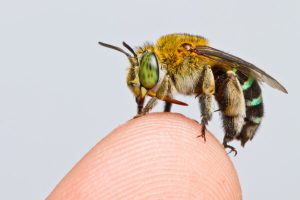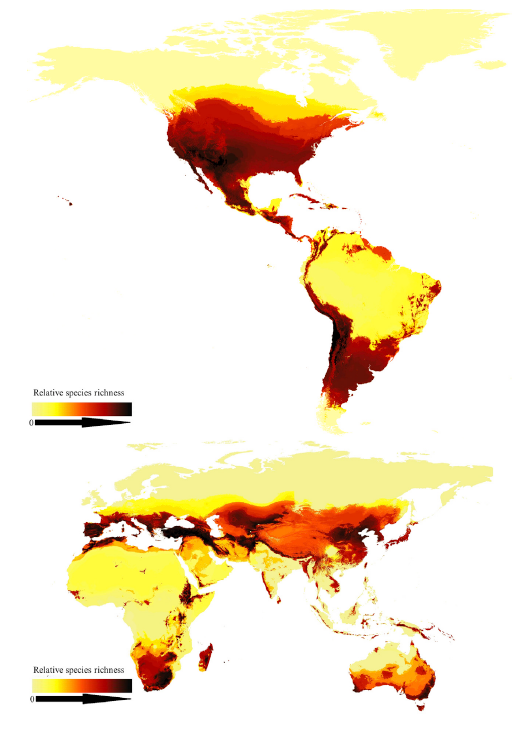Hint: think temperate zones and more to the north.
This interesting research shows where in the world different bee species live. It is suitable for Year 6,7,9 and 10 biology students learning about the ecosystem, species classification, information technology in science, and evolution of bees.
Word Count: 561

There’s a lot more to bees than you might think, because there’s a lot of them. Around 20,000 different species, in fact, and thanks to a new global biodiversity map we now know where to find them.
As a rule of thumb, there are more species in the Northern Hemisphere than the Southern, and more in arid and temperate environments than in the tropics.
“People think of bees as just honeybees, bumble bees, and maybe a few others, but there are more species of bees than of birds and mammals combined,” says John Ascher from the National University of Singapore, senior author of a paper in the journal Current Biology.
“The US has by far the most species of bees, but there are also vast areas of the African continent and the Middle East which have high levels of undiscovered diversity, more than in tropical areas.”
This is quite unusual, because most plants and animals follow a pattern of diversity in a latitudinal gradient: there is a general concentration of species around the tropics, and less near the poles.
The biodiversity of bees is instead bimodal; that is, it has two points of concentration instead of one – the temperate zones on each side of the equator, between the tropics and the poles.
We know all this thanks to a census by an international team led by Michael Orr from the Chinese Academy of Sciences (CAS). He and colleagues pooled data on nearly six million bees and mapped the different species to specific parts of the world.

“We’re extremely interested in abundance of bees, but that’s something that has to be done in relation to a baseline,” says Ascher. “We’re trying to establish that baseline. We really can’t interpret abundance until we understand species richness and geographic patterns.”
In their paper, the researchers suggest that the global patterns “appear to be largely driven by energy (solar) and resource (water and plants) availability within a relatively less-stringent climatic envelop”.
In terms of plants, bees might prefer shrubs and flowers that are low to the ground, instead of the tall trees found in forests and jungles. This could be another explanation for why they seem to thrive in desert areas that have lots of shorter plant life.
“When it rains in the desert, there are these unpredictable mass blooms that can literally carpet the entire area,” says Orr, “There’s a much higher turnover in the desert because of how patchy the resources are year after year. So there’s a lot of potential for new species there.”
That’s an important addition to the knowledge pool. To date there has been a shortage of data on the biodiversity of insects in desert areas, such as central Australia and large areas of Africa.
The researchers also hope their map can help develop bee conservation programs, reveal bee evolution and ecology, and even identify which bees are suitable for agriculture.
“Many crops, especially in developing countries, rely on native bee species, not honeybees,” says CAS’s Alice Hughes. “There isn’t nearly enough data out there about them, and providing a sensible baseline and analysing it in a sensible way is essential if we’re going to maintain both biodiversity and also the services these species provide in the future.”

Login or Sign up for FREE to download a copy of the full teacher resource





